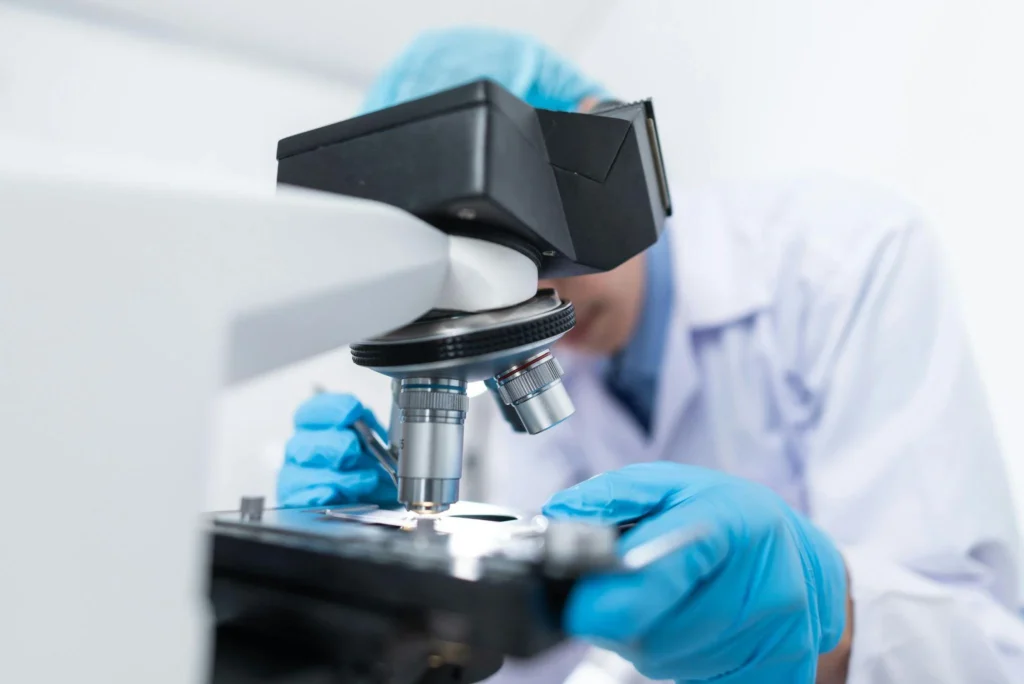A century ago, such domains as agriculture and healthcare were completely different from the state in which they are now. There are just too many advancements that continuously reshape the practices in these domains and bring new opportunities that could look like a fantasy some time ago. In particular, biotechnology is the source of many promises and innovations. Among the most significant developments in biotechnology is CRISPR technology, a powerful tool for gene editing that has unlocked new possibilities for genetic engineering, gene therapy, and more. Today, we will explore CRISPR and other gene editing technologies, analyzing their applications in medicine and agriculture, and examining the ethical debates surrounding their use.
What is CRISPR Technology?
CRISPR, short for Clustered Regularly Interspaced Short Palindromic Repeats, is a revolutionary tool that allows scientists to edit genes with unprecedented precision. Originally discovered as a natural defense mechanism in bacteria, CRISPR technology has since been harnessed by researchers to make targeted modifications to the DNA of living organisms. DNA editing using CRISPR involves cutting and replacing specific sections of genetic material, enabling the correction of genetic errors or the insertion of new traits.
Just like in the cases of monitoring air traffic, managing the odds at the Weiss casino, or calculating the parameters of a new bridge in engineering, precision is the key to successful biotechnology. CRISPR brings exactly such levels of precision.
Applications in Medicine: A New Era of Gene Therapy
One of the most exciting applications of CRISPR and other gene editing technologies is their potential to revolutionize medicine, particularly in the field of personalized medicine. With CRISPR, gene therapy has brought new opportunities, including tools for correcting genetic mutations that cause many diseases.
For example, in 2019, CRISPR clinical trials showed great results in treating sickle cell disease. We are still far from finding an ultimate cure for cancer but already an immense achievement for healthcare. This remarkable success is still often used as a popular argument in favor of gene editing in medicine.
Another great promise is human genome editing. In the ideal world, this innovation will bring us to the future without genetic disease. The point is the opportunity to cure genetic conditions even before a child’s birth. This area raises many ethical concerns and requires much work in the future. However, if the health of the next generation is the priority, it is vital to invest in such research further.
Applications in Agriculture: Agricultural Biotechnology and Genetic Modifications
Beyond medicine, CRISPR and gene editing are making waves in agriculture. Agricultural biotechnology stands to benefit significantly from the ability to make precise genetic modifications to crops, enhancing their resistance to diseases, pests, and environmental stressors.
It is important to note that genetic engineering has a long and very controversial story when it comes to agriculture. In particular, there were situations when attempts to insert foreign genes into plants led to unintended side effects. For those who imagine mutations resembling cosmic horror movies, the things were, actually, not as bad. Meanwhile, the results of such experiments were unfavorable because they produced crops that were unfit for human consumption.
However, there is an urgent problem of global starvation that needs to be solved. Many underdeveloped countries, especially the ones located in Africa, face severe problems with feeding their constantly growing populations. Genetic modification can enhance the levels of vitamins in various products, which can reduce global starvation threats dramatically. This may sound like a scenario from a sci-fi movie but such super-nutritious meals similar to the ones consumed by astronauts on space stations may soon become available to regular citizens of underdeveloped states.
Ethical Debates Surrounding CRISPR and Gene Editing
We have already mentioned some ethical concerns related to CRISPR and gene editing. But, surely, this question deserves more specific attention because it is especially relevant in the era of growing ecological awareness. The ability to edit the human genome and make genetic modifications carries profound implications, particularly when it comes to issues like human genome editing. For example, the possibility of editing embryos to prevent inherited diseases sparks debates about the potential for “designer babies” and the moral implications of altering the genetic makeup of future generations.
In addition, there is an old question of preserving ecosystems. The point is that the use of CRISPR can impact biodiversity and ecological dynamics. While this impact may not be evident at first glance, it becomes more relevant in the long run. In particular, there is a common concern that the power of gene editing could be misused, leading to the creation of genetically modified organisms with unknown risks. In response to such issues, there appear many regulations and standards creating boundaries for biotechnology research. Such an approach can slow the innovation down but it also secures the environment from potentially dangerous experiments. The main aim of such initiatives is to make all biotechnology advancement efforts more responsible.
Recent Breakthroughs and the Future of CRISPR Technology
Despite the ethical challenges, recent breakthroughs in CRISPR and gene editing prove to be very exciting. We have already mentioned the success of CRISPR clinical trials in treating genetic diseases. Meanwhile, there are also solid precision advancements making CRISPR a more accessible and powerful tool.
Looking to the future, the possibilities of CRISPR technology are vast. In medicine, CRISPR could one day be used to cure a wide range of genetic diseases, from rare inherited disorders to common conditions like heart disease and cancer. The development of personalized medicine could lead to more effective treatments tailored to an individual’s unique genetic makeup, paving the way for a future where diseases are treated at the genetic level before they even manifest. In addition, with the growing resource shortages, agricultural biotechnology can be a powerful tool for meeting food demands and reducing the environmental impact of farming.
Conclusions
CRISPR and gene editing technologies are revolutionary forces in the domain of biotechnology as they find useful practical implementations in medicine and agriculture. From gene therapy and genetic disease treatment to the creation of genetically modified crops, these tools are reshaping how we approach genetic disease treatment and food production. There are still many ethical debates surrounding this topic, and such concerns should not be denied. However, the potential of CRISPR technology is truly impressive. After all, there is a sheer belief that such innovations will help humankind solve many global problems before it is too late.







